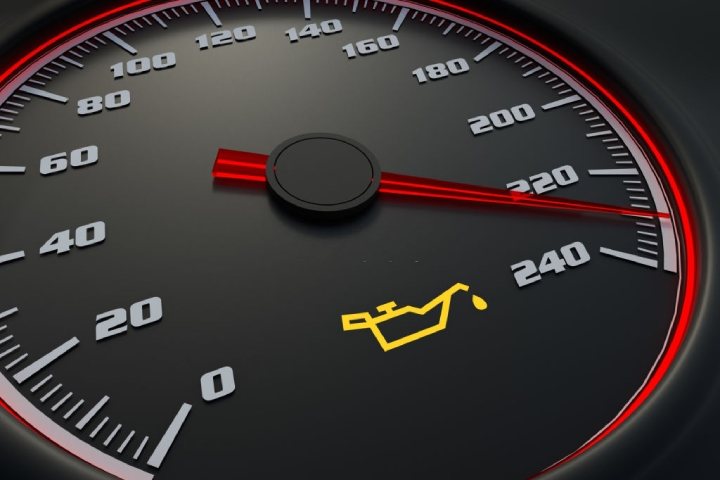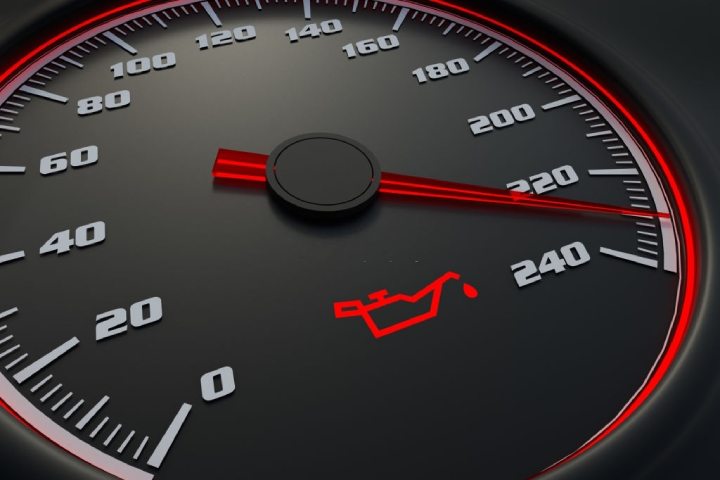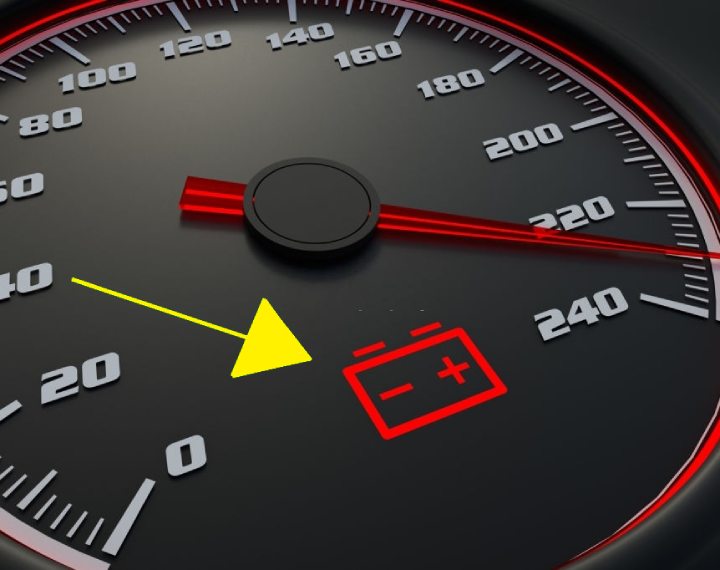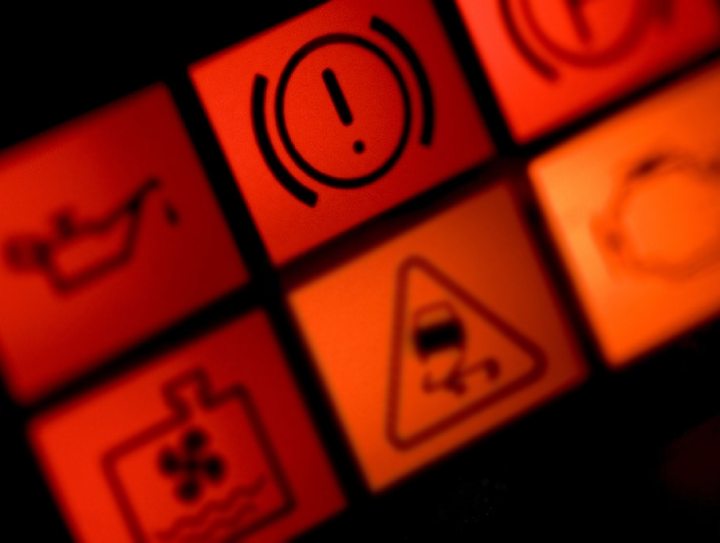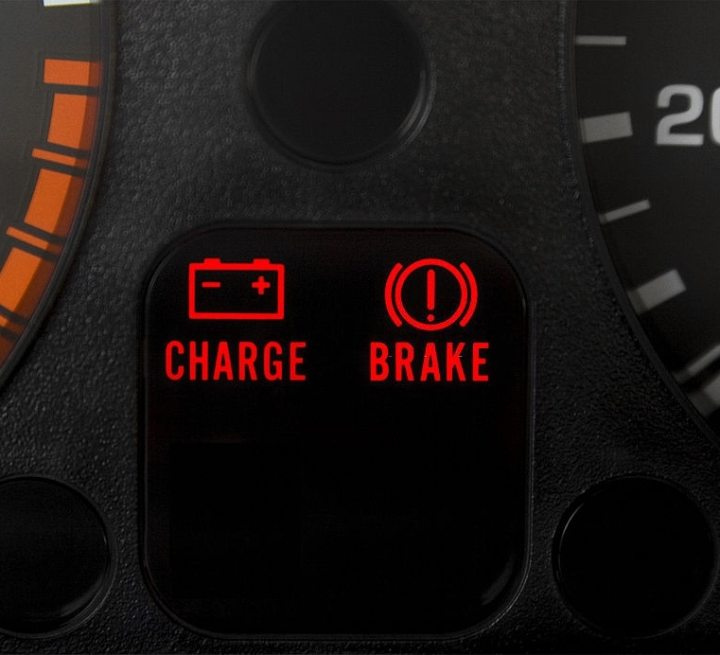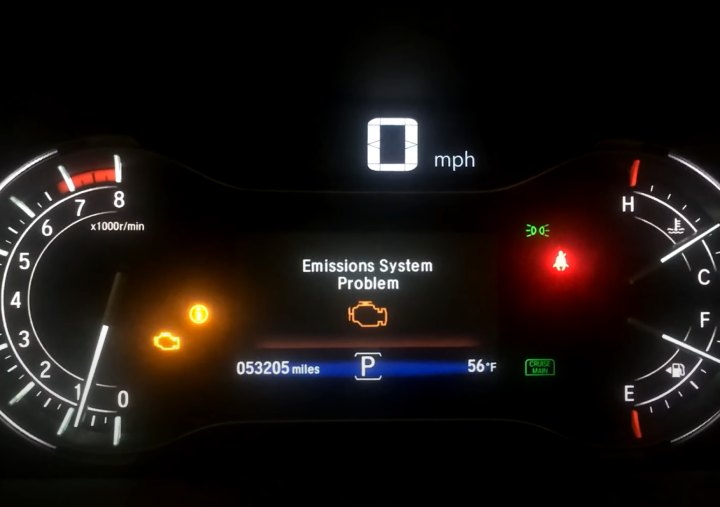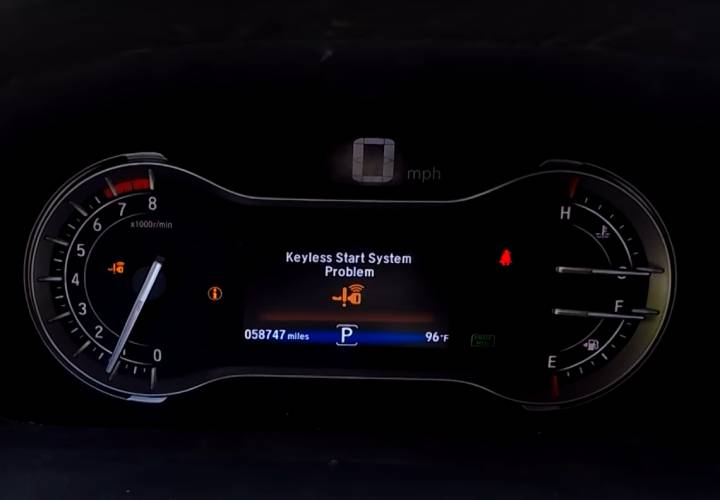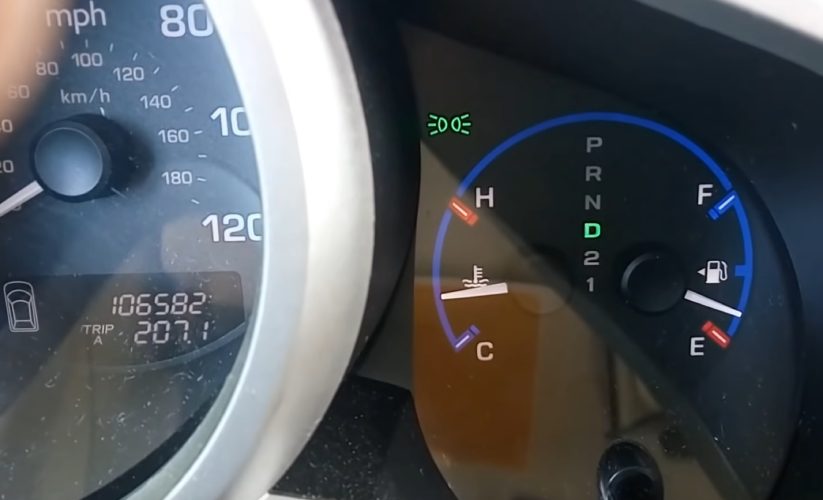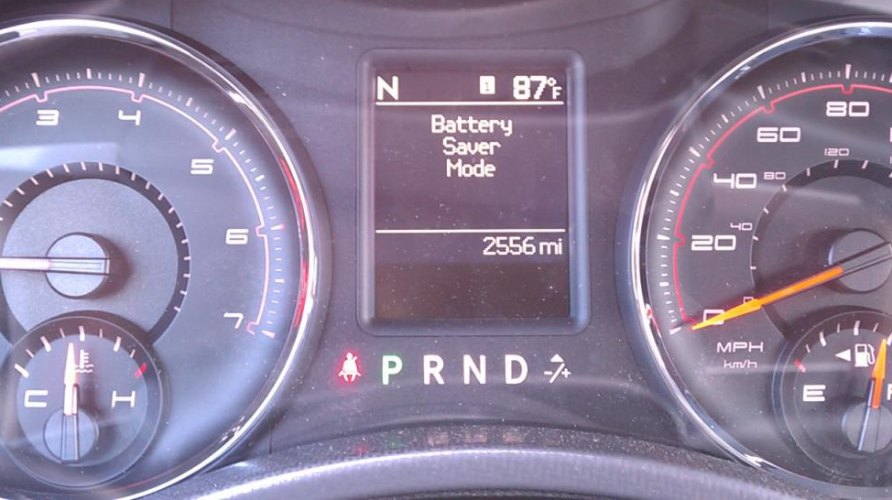A “Check Gauge Light” warning alerts the driver of a potential problem with the car. As there are several gauges in a vehicle, the check gauge light comes on when any of these gauges go out of range. The driver should stop when safe and further investigate the issue.
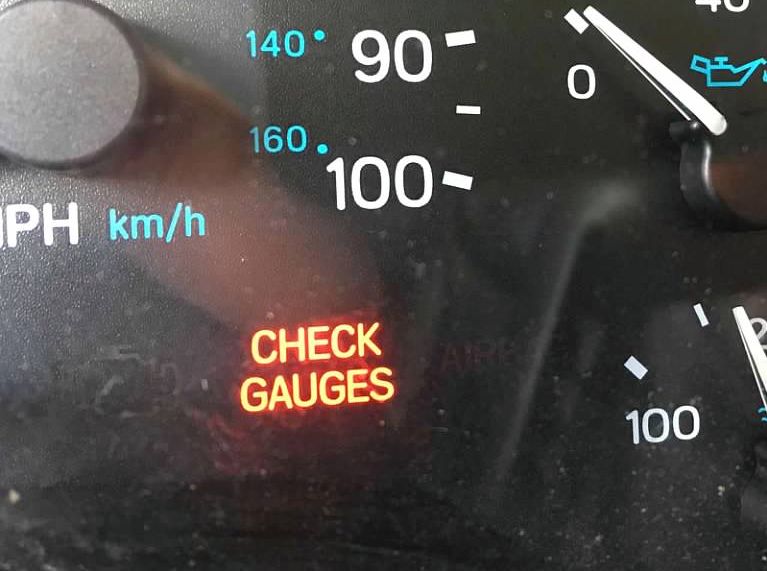
Where is Check Gauge Light Located?
Check Gauge warning light is located on the dashboard of the car. Some cars have a digital information cluster, while older vehicles have analog gauges.
It will entirely depend on the make and model of the vehicle. Some brands have their instrument panel in the center, while most cars have it above the steering wheel.
Since all other gauges connected to check gauge light are present in the dashboard, it would only make sense to place them side-by-side.
So that, whenever check gauge light comes on, you can see in real-time which gauge has surpassed its limit.
What Do You Do When Your Check Gauge Light Comes On?
The check gauge warning comes on when at least another warning light is on, although it can also give false warnings. For now, let’s see what we should do when the check gauge light comes on.
I have come up with a list of the standard gauges present in most modern cars. If light for any of these warning lights comes on, you should take immediate action.
- Fuel Gauge: Refill if you are low on gas.
- Temperature Gauge: Refill coolant, check the water level in the radiator.
- Oil Pressure Gauge: Check oil levels and refill if required.
- Seat Belt Warning: Fasten your seat belt.
- Air Bag Warning: Visit a mechanic immediately.
- ABS Brakes Warning: ABS isn’t working visit a mechanic.
- Brake Pad Warning: Brake pads near to end, replace them.
- Low Tire Pressure: Check tire pressure and refill air.
- Battery Warning: Check battery health and wiring, replace if required.
- Fault Problem: Just any common problem can cause this, visit a mechanic.
There are at least 50 other warning and check lights on your information cluster. But all major ones are above.
What Do Gauges Do on a Car?
Gauges are like your meter tape! While gauges are more complex, they are both used to indicate various measurements.
They are usually placed in your information cluster, displaying different information about various car systems, allowing the driver to take any preventive action if anything is about to go wrong.
There are several gauges located on your dashboard, which I have explained above in great detail. The engine temperature gauge is the most common and critical of all.
When it enters the red region, it is an indication that the engine is running at a higher temperature than its optimum running temperature.
If you do not immediately take any action, it could lead to severe damage. This specific case could result in a blown gasket, leakage, or a seized engine.
You can view gauges in your car as diagnostic tools, which help you ensure your vehicle is running correctly.
How Do Car Gauges Work?
There are two basic types of car gauges, and both have different working methods:
- Electrical Gauge:
The electrical gauges take base reading from their sensors. To get a basic understanding, you should know that these sensors are located in places where the problem can occur.
For example, in the case of an oil pressure gauge, the oil pressure sensor is located in the passage between the engine and oil reservoir.
It measures via a signal the amount of oil that is being transferred. A lower oil flow will result in a low-pressure oil.
The sensor information is passed on in the form of electrical resistance. The current passing through a coil measures the resistance. If resistance drops below a specific level, then adequate current can cross. As a result, that particular gauge light comes on.
- Mechanical Gauge
The difference in mechanical gauge is that it uses a physical measurement instrument instead of a sensor.
If we are using the example of an oil pressure gauge, then, in this case, it uses a draw pipe that is connected at a T between the oil reservoir and the engine head.
The amount of oil flowing into it will indicate the oil pressure as the gauge is calibrated according to it. If it drops below a certain level, the gauge light comes on. That’s how mechanical gauges work.
False Warning – If there are no other warning lights ON
Sometimes you get a false warning for the engine check light. Modern cars are equipped with complex and twisted electrical systems, and it is quite possible that nothing is wrong with your vehicle, yet the engine check light has come on.
In this scenario, first of all, look at all other gauges. Then physically check all things inside out. For example, a user reported that all gauges seemed fine, but his check gauge light was on.
Upon looking around, he saw that his gas tank cap was loose, so that was the reason why the check gauge light was there.
Hence, the reason can be minimal, or at times the check gauge warning can come on due to a sensor malfunction. The best course of action is to visit a professional mechanic if you cannot figure it out.
How Long Can You Drive with Check Gauge Light?
This answer would depend on why the check gauge light has come on. If it has come on because the washer fluid level is low, then you can drive for as long as all systems are working fine. However, if it is on due to some critical reason, like the engine check light, you should pull over when safe and investigate the issue.
If check gauge light has come on due to a warning from the tire pressure monitoring system (TPSM), you can drive for another 100 miles or even more if you keep your speed low enough to nullify the effects.
However, it is critical if the check gauge light has come due to low engine oil. You should stop at the earliest and get your engine oil refilled.
For a critical issue, you would get a flashing check light. Otherwise, it would be steady, and you would know that nothing serious is happening.
As a rule of thumb, anything to do with safety must be dealt with immediately, then comes the engine, and after that, any other system.
What car models do have a check gauge warning light?
Dodge Ram 2500 owners have reported multiple instances when the Check Gauge light comes on. This was always to alert the driver that there is another warning light on, and they should investigate the issue.
Other popular models with a Check Gauge warning light include Ford Ranger, Jeep Cherokee, and Chevy Trailblazer.
My name is Jeffrey Williams and I have been a car mechanic for over 35 years. I am currently working NYC Auto Repair Shop, in New York City and recently developed a strong passion about blogging. I decided to put together this blog where I will try and answer the most commonly asked questions I get on a daily basis from my customers.

